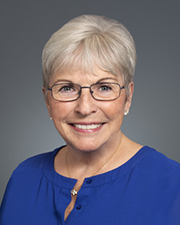
L.M. Sepso Appraisal Associates
Appraising was a surprise career for me. I always thought I was going to be a teacher–even got a degree in education and taught preschool for a few years. Then the little children I taught were my own children, and truthfully, I thought I’d go nuts if I taught school all day and then came home to more children. So, after a few random part times jobs, a friend of mine–also with small children–got her real estate license and started doing appraisals. This was back in the 80s when licensing was not in place. All you needed to appraise was a clipboard, a pencil and a camera. Training was essentially following another appraiser around for a week or so. Then–off on your own. Then came licensing, and some pretty stiff requirements. Over the years, more requirements were added. There were requirements for either a college degree, or some specific college level classes. And then there was the additional appraisal classes that were required. Residential appraisers needed to complete 200 hours in appraisal education–and these were similar to college level courses, all with exams at the end and 2,500 hours of experience under a qualified supervisor. General appraisers, who are able to appraise a wide variety of property types, had even more classes and 3,500 experience hours. And of course, when you finally got through those challenges, there was the national exam. But, recently the experience hours have been lowered–1,500 hours of experience in 12 months for residential appraisers and 3,000 hours of experience in 18 months for general appraisers.
I have been appraising for over 30 years. The changes mentioned above will make it easier to become an appraiser. The appraisal courses and some college level classes are still required, but the experience hours have been lowered, and additional options for learning techniques in appraising have become available. The Appraisal Foundation is developing a video course that will allow trainee appraisers, those still in the learning process, to work through several properties that are atypical, or have issues they might not experience in whatever local area they appraise. A more serious issue is the need for more appraisers. In Connecticut alone, the number of residential appraisers is about half what it was 10 years ago. It’s not necessarily due to the fears that appraising is outdated and we can be replaced by AVM’s and other analytical data. The real issue is that most appraisers are getting on in age, and want to retire, so there aren’t as many of us to handle the appraisals required. The last article I read stated that most appraisers were in the 50-60 age group.
Of course, there are other issues. If you want to do lending work (appraising a property for a mortgage) the lender requirements are a little different, and everyone wants the valuation ‘yesterday.’ But there are several options for non-lender appraising.
The most important thing in appraising is to keep taking courses. New concepts and technologies are continually being advertised. Join an Appraisal group, whether it is the Appraisal Institute, the Society of Farm Appraisers, the ASA, among others, or just a group of other appraisers who take time to meet and discuss the industry. The benefits of this career have allowed me to go from the sole proprietor to owning a company that covers the entire state of Connecticut. I have a mix of employed and contract appraisers assigned to geographic areas they compete to appraise. I even get to finally teach, my original dream. Now I teach adults, who are anxious to learn the appraisal profession. Sometimes I work long hours when trying to meet deadlines. Other times, I take a day off and enjoy a lunch with a friend. This can be a great career for someone who can work independently. Don’t let the classes and experience hours hold you back.
Linda Sepso, SRA, AI-RRS, is the president of L.M. Sepso Appraisal Associates, Stratford, Conn.








